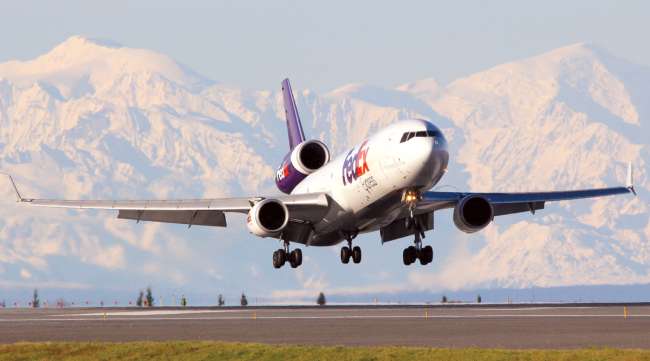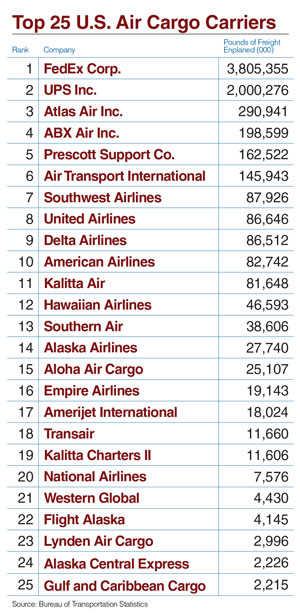Focus on Air Cargo


A look at revenue generated by the world’s largest freight carriers shows a mixed picture, with parcel delivery continuing to grow in response to e-commerce trends, air cargo picking up after a prolonged slump, rail carriers battling weak demand for commodity shipments and consolidation becoming a bigger factor for truck and ocean freight haulers.
U.S.-based package specialists FedEx Corp. and UPS Inc. maintained their positions atop the Transport Topics Top 50 Global Freight Carriers list, while Germany’s Deutsche Post DHL and Japan’s Yamato Group moved up to Nos. 6 and 16, respectively, from Nos. 9 and 20 a year ago, based on estimates of revenue generated from freight-hauling assets. FedEx received a revenue boost from its acquisition of TNT Express.
All of the nine parcel carriers on the Top 50 list this year appear to be benefiting from increases in the volume of shipments across borders as more goods are purchased online.
The e-commerce trend, along with stronger economic growth, is providing a big boost to air cargo. That, in turn, is leading many cities and airport managers to increase efforts to use airfreight to create jobs and promote economic development.
Officials at Cincinnati/Northern Kentucky International Airport in Hebron, Ky., for example, are celebrating Amazon.com’s decision to use the airport as its primary air hub. The Seattle-based online retailer will invest $1.5 billion to build a 3 million-square-foot cargo facility on a 900-acre site to accommodate a fleet of more than 100 aircraft. In addition, DHL Express is expanding its air hub at the airport, a move that is expected to trigger investment in warehousing and distribution activity in the area.
The establishment of new air hubs will be “transformational” for the local economy and businesses, airport CEO Candace McGraw said.
Meanwhile, the combination of air cargo and industrial development is turning Rickenbacker International Airport in Columbus, Ohio, into a “gateway” hub for international carriers and a consolidation point for domestic freight transportation.
In Canada, officials at Edmonton International Airport are developing a community that includes shopping and entertainment venues, offices and a cargo village.



